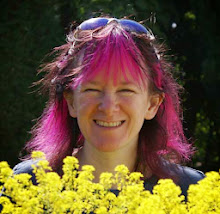For example, if a yellow sweater is overdyed with blue, some of the original yellow will remain visible and the final result will have a yellow cast (giving a more or less green shade). Depending on the relative depth of shade of the two colours this may be more or less obvious. A sunshine yellow dye overdyed with a bright turquoise is likely to retain much of the yellow tone, giving a chartreuse to lime green. A royal blue on the other hand may produce a deeper forest green, although if the base colour is very pale it may be very close to blue.
If the original colour is very pale the finished shade will be correspondingly less affected but may still carry a cast of the original.
So, why is this relevant to stains? Well, bleach marks and fading are just areas of different colour to the original shade. For this reason, when overdyed the dye will not give the same shade over the entire garment but will give differing colours on the bleached/faded and the undamaged areas.
To address this, it may be possible to build up the colour in the stained area by spot dyeing then overdyeing.
- Make sure the garment has been thoroughly rinsed in cold water to remove any remaining bleach.
- Choose a dye suitable for the fibre content of your garment.
- Make up a small amount of the dye in a beaker or jar.
- Test the colour by painting the dye onto a coffee filter paper or piece of kitchen paper. What you're aiming for here is the tone of the original shade not the depth of the shade - we'll be building up the colour so we can worry about this later. (I'll be covering colour picking and blending in a future post).
- Place a pad beneath the patch to be dyed to absorb any excess dye. An old towel or thick wad of kitchen paper should be fine as long as the dye can't reach any other part of the garment.
- Add any fixer as required for the dye (most likely a mild alkali for plant fibres, a mild acid for animal fibres).
- Use a small piece of sponge, dip it in the dye solution and squeeze out most of the liquid.
- Starting in the centre of the stain, apply the dye by pressing the sponge gently over it. Gradually move outwards until there is no dye left on the sponge.
- Re-dip and repeat the process - work slowly - you can add more dye but you can't take it away!
- Just before you reach the edge of the stain, start feathering out the colour, lessening the amount of dye. You should aim for a soft edge that slightly overlaps the original. A crisp edge will be more noticeable.
- Allow this first layer to dry as the colour will dry a couple of shades lighter.
- Repeat as required, drying between each layer. If the colour is still very pale, paste up a little more dye powder with a small amount of water and add to the solution.
- You may decide at this point that the colour is close enough in which case there's just fixing the dye to think about. Refer back to the instructions on your dye. If it's a plant fibre such as cotton, it's likely that you will only need to leave the garment (cover the dyed area with clingfilm to keep it damp) overnight and then rinse.
- If it's an animal fibre such as wool, it will almost certainly need heat. In this case, dampen the rest of the garment to prevent the heat burning the wool. Try to avoid getting water onto the dyed area. Wrap the garment in clingfilm, place it uncovered in a microwaveable dish and put a beaker of water alongside the garment. This will create some extra steam without overwetting the garment. Carefully microwave it for 30 seconds-1 minute at a time until it is hot but not scorching. If you can, arrange it so the dyed area is on the outer part of the bundle.
- Once it's hot, allow it to cool and rinse.
- This process can be repeated within reason. If you wish you can then dye the whole garment (I'll be covering dyeing garments in a later post).
- Only add the fixer before you are going to start using it as it will start acting straightaway. This is particularly with plant fibre dyes which should be used within a few hours of adding the fixer. (Animal fibre dyes will keep longer even after the fixer has been added).
- Cosmetic sponge wedges are great for applying dye or cut a corner from a kitchen sponge - but remove the scrubby part first!
- No microwave? Put the clingfilmed garment in an ovenproof dish, cover and cook on a low heat for 20 mins. Check and return to the oven if it isn't hot enough. To avoid the garment burning, put a beaker of water alongside it in the dish to create some steam.
Important: Health and Safety
Always read the health and safety guidelines provided with your dye before you begin and follow them carefully.

.jpg)





